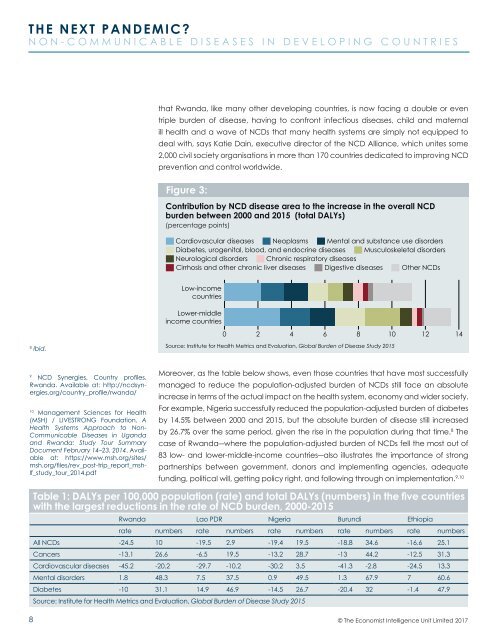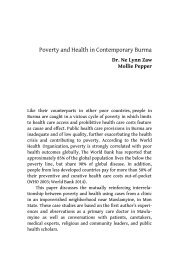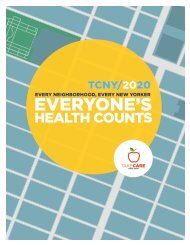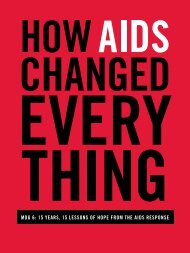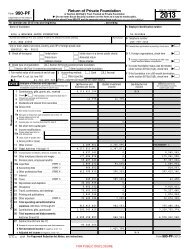THE NEXT PANDEMIC?
Thenextpandemic
Thenextpandemic
You also want an ePaper? Increase the reach of your titles
YUMPU automatically turns print PDFs into web optimized ePapers that Google loves.
<strong>THE</strong> <strong>NEXT</strong> <strong>PANDEMIC</strong>?<br />
NON-COMMUNICABLE DISEASES IN DEVELOPING COUNTRIES<br />
that Rwanda, like many other developing countries, is now facing a double or even<br />
triple burden of disease, having to confront infectious diseases, child and maternal<br />
ill health and a wave of NCDs that many health systems are simply not equipped to<br />
deal with, says Katie Dain, executive director of the NCD Alliance, which unites some<br />
2,000 civil society organisations in more than 170 countries dedicated to improving NCD<br />
prevention and control worldwide.<br />
Figure 3:<br />
Contribution by NCD disease area to the increase in the overall NCD<br />
burden between 2000 and 2015 (total DALYs)<br />
(percentage points)<br />
Cardiovascular diseases Neoplasms Mental and substance use disorders<br />
Diabetes, urogenital, blood, and endocrine diseases Musculoskeletal disorders<br />
Neurological disorders Chronic respiratory diseases<br />
Cirrhosis and other chronic liver diseases Digestive diseases Other NCDs<br />
Low-income<br />
countries<br />
Lower-middle<br />
income countries<br />
0 2 4 6 8 10 12 14<br />
8<br />
Ibid.<br />
Source: Institute for Health Metrics and Evaluation, Global Burden of Disease Study 2015<br />
9<br />
NCD Synergies, Country profiles,<br />
Rwanda. Available at: http://ncdsynergies.org/country_profile/rwanda/<br />
10<br />
Management Sciences for Health<br />
(MSH) / LIVESTRONG Foundation, A<br />
Health Systems Approach to Non-<br />
Communicable Diseases in Uganda<br />
and Rwanda: Study Tour Summary<br />
Document February 14–23, 2014. Available<br />
at: https://www.msh.org/sites/<br />
msh.org/files/rev_post-trip_report_mshlf_study_tour_2014.pdf<br />
Moreover, as the table below shows, even those countries that have most successfully<br />
managed to reduce the population-adjusted burden of NCDs still face an absolute<br />
increase in terms of the actual impact on the health system, economy and wider society.<br />
For example, Nigeria successfully reduced the population-adjusted burden of diabetes<br />
by 14.5% between 2000 and 2015, but the absolute burden of disease still increased<br />
by 26.7% over the same period, given the rise in the population during that time. 8 The<br />
case of Rwanda―where the population-adjusted burden of NCDs fell the most out of<br />
83 low- and lower-middle-income countries―also illustrates the importance of strong<br />
partnerships between government, donors and implementing agencies, adequate<br />
funding, political will, getting policy right, and following through on implementation. 9,10<br />
Table 1: DALYs per 100,000 population (rate) and total DALYs (numbers) in the five countries<br />
with the largest reductions in the rate of NCD burden, 2000-2015<br />
Rwanda Lao PDR Nigeria Burundi Ethiopia<br />
rate numbers rate numbers rate numbers rate numbers rate numbers<br />
All NCDs -24.5 10 -19.5 2.9 -19.4 19.5 -18.8 34.6 -16.6 25.1<br />
Cancers -13.1 26.6 -6.5 19.5 -13.2 28.7 -13 44.2 -12.5 31.3<br />
Cardiovascular diseases -45.2 -20.2 -29.7 -10.2 -30.2 3.5 -41.3 -2.8 -24.5 13.3<br />
Mental disorders 1.8 48.3 7.5 37.5 0.9 49.5 1.3 67.9 7 60.6<br />
Diabetes -10 31.1 14.9 46.9 -14.5 26.7 -20.4 32 -1.4 47.9<br />
Source: Institute for Health Metrics and Evaluation, Global Burden of Disease Study 2015<br />
8<br />
© The Economist Intelligence Unit Limited 2017


